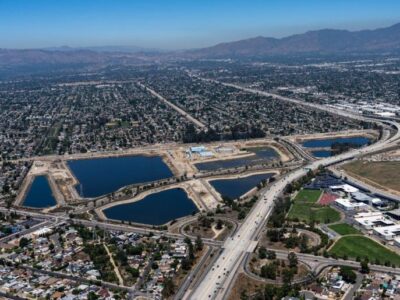Draft Delta flow criteria issued
Last year’s California water reform legislation directed the State Water Resources Control Board to issue new flow criteria for the Delta to protect public trust resources, which include but are not limited to the fish species protected by the federal Endangered Species Act. The deadline for the Board to adopt those criteria is next month. This week, the Board staff issued a draft flow criteria report, which reportedly will be considered by the Board on August 3.
The report is long and highly technical. It’s impossible to evaluate the specific criteria proposed without knowing a lot more than I do about the science of Delta flows and the ecosystem those flows support. But there are a couple of points that anyone can understand.
First, when Board staff took a hard look at the state of scientific knowledge about Delta species, they reached the same conclusion as the federal regulatory agencies that implement the ESA and the National Research Council committee that reviewed those agencies’ work: increased flows and increased flow variability are needed through the Delta, which means that diversions have to be reduced from recent levels. To quote from the report:
Restoring environmental variability in the Delta [which Board staff view as essential to protecting public trust resources] is fundamentally inconsistent with continuing to move large volumes of water through the Delta for export.
That’s obviously not going to make water users happy.
Second, the report makes every effort to minimize the impact of that conclusion and to preserve the Board’s discretion not to use these criteria for regulatory purposes. It emphasizes repeatedly that the criteria do not have regulatory significance. That comes straight from the legislation, and its why I’ve been fairly skeptical about the usefulness of this process. The report does more than point out that these criteria are not regulatory, though. It says that the Board cannot and will not use them for regulatory purposes without a broader review. This process is just to determine what the public trust resources of the Delta itself need.
In the State Water Board’s development of Delta flow objectives with regulatory effect, it must ensure the reasonable protection of beneficial uses, which may entail balancing of competing beneficial uses of water, including municipal and industrial uses, agricultural uses, and other environmental uses. The State Water Board’s evaluation will include an analysis of the effect of any changed flow objectives on the environment in the watersheds in which Delta flows originate, the Delta, and the areas in which Delta water is used. It will also include an analysis of the economic impacts that result from changed flow objectives.
In other words, just because the Board’s staff has concluded that Delta species need more water, don’t count on the Board using its authority to see that they get it.
Of course, this report represents one more expert scientific review, and its conclusions can’t be ignored by the Board or other regulatory agencies. Assuming they are adopted by the Board in August, it’s going to be interesting to see what effect these criteria have on Delta regulatory decisions.
As usual, Aquafornia has links to various news stories and reactions to the report.
Reader Comments
4 Replies to “Draft Delta flow criteria issued”
Comments are closed.






To quote from the report:
Restoring environmental variability in the Delta [which Board staff view as essential to protecting public trust resources] is fundamentally inconsistent with continuing to move large volumes of water through the Delta for export.
That’s obviously not going to make water users happy.
I took that as a bone thrown to water users, because it justifies separating conveyance from habitat restoration in the Delta. I thought it was shilling for a Peripheral Canal, for the benefit of water users. (I guess I didn’t contemplate the possibility that water users wouldn’t get their export flows.)
onthepublicrecord, thanks for the comment. You could well be right, especially since the quoted language explicitly talks about moving water through the Delta. But that isn’t how I read it. If high flows are periodically needed through the Delta, that would limit the ability to export either through the Delta or around it. The report seemed pretty clear that (if the health of Delta species is the only or key consideration), something closer to the historic proportion of Sacramento and San Joaquin flows needs to go through the Delta and out. That’s an argument for reducing diversions, from whatever point.